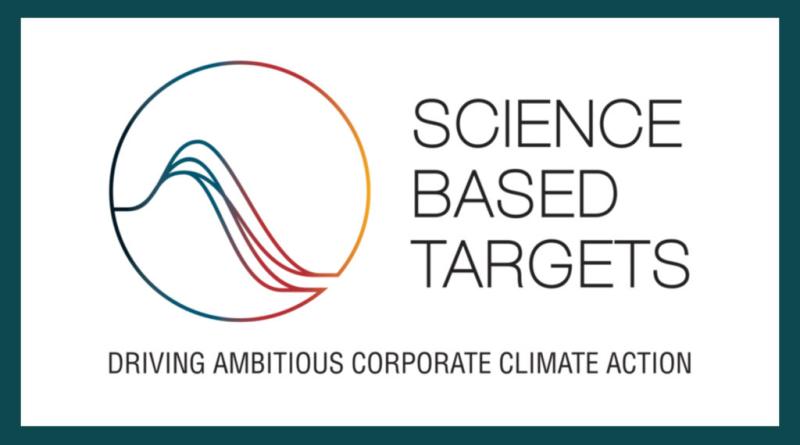Target in Sight

The Science Based Targets Initiative is setting stricter guidance for the finance sector. NGOs welcome the move, but think it can go further.
At the start of August, Amazon published a blog on its commitment to the Science Based Targets Initiative (SBTi), a mere few weeks later it was reportedly quietly dropped from the initiative for seemingly being unable to meet the required targets.
The saga demonstrates the tumultuous history of the SBTi, which launched in 2015 and has become the leading standard for companies to demonstrate that they are reducing their greenhouse gas (GHG) emissions in a way which aligns with climate science.
At the end of 2022, more than 4,000 companies covering over a third of the global economy’s market capitalisation, were setting targets or committing to do so via the SBTi, according to its website.
But it has also been dogged by criticism. The SBTi, a partnership between the Carbon Disclosure Project, the United Nations Global Compact, World Resources Institute and the World Wide Fund for Nature, is to split its standard-setting and target validation functions. This follows concerns about its governance and impartiality.
“By creating a separate entity for target validation services, the SBTi is adopting the recognised best practice for assurance bodies, which is designed to safeguard impartiality,” it said in a statement last week.
The initiative is still dealing with a three-year old complaint from former technical advisory group member Bill Baue, who claims the SBTi it is plagued by conflict-of-interest issues, and that it doesn’t align with the best available science.
But it’s also growing rapidly, according to MIT Technology Review, having verified the emissions reduction timelines of more than 2,6000 companies with plans to set them for some 10,000 businesses by 2025. Significantly, last November, the White House proposed rules that will require large federal contractors to set SBTi-approved emissions reduction plans – though Republicans are pushing back on this, citing concerns raised by Baue.
Increasingly, asset managers are also using SBTi accreditation in their stewardship with companies on net zero. US-based asset manager Trillium for example votes against or withholds support from the appropriate committee chair, or if none exist, the board chair, if the company has not set or committed to set a science-based GHG emissions-reduction target through the SBTi.
Now the finance sector is becoming the focus of SBTi, with an SBTi Finance Net-Zero Standard in development which aims to provide clarity on key concepts, such as what it means to reach net zero for a financial institution.
Stricter fossil fuel guidance
Paul Schreiber, Campaigner at NGO Reclaim Finance, sits on the technical advisory group of the SBTi and says its proposed standard goes beyond just looking at decarbonisation and the trajectory of financial organisations. “In the upcoming guidance you won’t be able to get validation if you finance fossil fuel production,” he explains.
He says this move demonstrates the SBTi’s willingness to take on points that NGOs like Reclaim Finance have been talking about for years. He adds that the SBTi is proposing aligning with the UN High-Level Expert Group on Net Zero, “which will make the SBTi a bit more precise,” he says.
The principles laid out by the group in its ‘Integrity Matters’ report published at COP27 form the basis of the UN Climate Change (UNFCCC) Recognition and Accountability Framework for non-state actors launched at the Bonn Climate Conference in June.
Jessye Waxman, Senior Campaign Representative in the Sierra Club’s Fossil-Free Finance campaign, says it is also pleased with SBTi’s positioning on fossil fuels in its consultative draft on standards for the finance sector. “A key part looks at the energy sector, and moving to full alignment with net zero would constitute an immediate cessation of new financing to fossil fuel expansion and they are looking at phasing out existing commitments over time which is pretty central to what the science is saying,” she says.
Other proposed reforms which Sierra Club welcomes is that SBTi has shifted its yardstick for “science-based” away from its prior 2°C pathway to a 1.5°C pathway, in accord with the ambition of the Paris Agreement.
But there are ways that Sierra Club and other NGOs believe that the SBTi could tighten its proposed new standard, such as requiring all companies to set Scope 1, 2, and 3 targets using 1.5°C pathways with no or low overshoot and only a limited level of negative emissions. They also say it should require banks to include their asset management divisions, which are currently included as optional for inclusion within bank targets, and require financial institutions to set 2050 targets for just transition support in the Global South.
Waxman adds that another omission is minimum thresholds for portfolio coverage and strict targets in this regard. She also says that there should be more clarity from SBTi on what alignment looks like. “SBTi is proposing a maturation assessment for companies from not having a target to transition to totally transitioning.”
She says the concern is that there are a lot of institutions doing a good job of having targets, but “when you look at their financial statements or capital expenditures, the implementation is not entirely where it needs to be”.
Financial institutions are under increasing pressure from investors for greater transparency on their net zero pathways. US banks and insurers were subject to a series of shareholder proposals relating to fossil fuel exposures in the 2023 AGM season. And a ten-point standard outlining investor expectations for banks’ net zero transition strategies, was published in June by the Institutional Investors Group on Climate Change.
The Glasgow Financial Alliance for Net Zero (GFANZ) finalised its transition finance framework for financial institutions last November. However the group’s credibility has been weakened in some eyes after it allowed members not to align with criteria set by the UN Race to Zero campaign.
Improved credibility
Kevin Leung, Sustainable Finance Analyst at the Institute for Energy Economics and Financial Analysis (IEEFA), also agrees that that SBTi has “stepped up its game” with its recent draft standards for the financial sector. In a blog he says if the SBTi maintains and improves on the proposal’s rigour throughout the consultation process, “it will go a long way towards improving its own credibility” and guide financial institutions towards better management of climate-related financial risk.
The SBTi’s proposal comes in three parts. The first is ‘Near-Term Financial Sector Science Based Targets Guidance V2’, which represents several criteria changes and clarifications since its first release in October 2020. The second, the ‘Financial Institutions Net-Zero Standard Conceptual Framework and Initial Criteria’, outlines core requirements around near- and long-term targets, and fossil fuel components. Thirdly, the ‘Fossil Fuel Finance Position Paper’ gives special guidance regarding the energy value chain.
According to SBTI’s timeline, it intends to launch the Financial Institution Net-Zero Standard in Q4 2023 or ‘early’ 2024.
Like Waxman at Sierra Club, Leung also feels the proposed standard can be tightened up, especially with near-term targets. He says 100% of financing exposure, regardless of asset class, should be covered for the fossil fuel sector as for electricity generation in the near-term boundary. Portfolio exposure of facilitated emissions should also be considered for the near term, and like Sierra Club, IEEFA says that all asset management activities – including those within a banking group – should be covered.
It also says that the SBTi should consider introducing asset-based thresholds – in addition to revenue – in delineating “fossil fuel” activities.
“Over time it may not be a true reflection of that company,” Leung explains. “Because the revenues can be very volatile and revenues can be subject to lower demand, so the proportion of revenue can get smaller, but the fossil fuel asset exposure is still high.”
On the SBTi’s long-term guidance, Leung says “some companies may actually not really benefit from the guidance when it comes to implementation of their transition plan”, suggesting there may be a need for more tools and methods in this regard.
But overall IEEFA is encouraged. “Time will tell what final product emerges once all consultation responses are taken into account,” Leung co-writes in the blog. “Yet if this draft is any indication, the direction of travel appears to be positive.”





